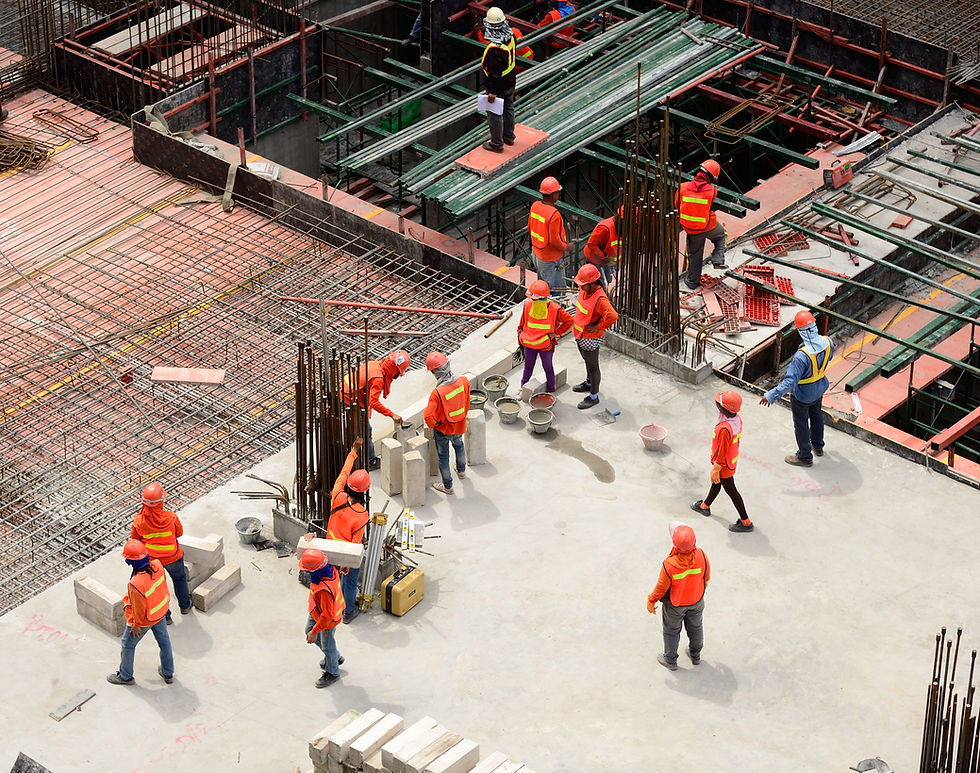The Role of Polyurethane Grouting in Waterproofing and Structural Repairs
- sudarshan bire
- Dec 15, 2024
- 3 min read

Polyurethane grouting has emerged as a versatile and innovative solution in the construction and civil engineering industries. Whether for waterproofing or structural repairs, this technique is highly effective in addressing a range of challenges, including water seepage, cracks, voids, and foundation settlement. Its adaptability and reliability make it an essential tool for modern construction and repair projects.
What is Polyurethane Grouting?
Polyurethane grouting involves injecting a liquid polyurethane resin into cracks, joints, or voids in concrete structures. The resin reacts with water or a catalyst to expand and form a flexible, durable foam or gel, depending on the formulation. This expansion fills the voids or cracks, sealing them completely and restoring the structural integrity of the affected area.
Key Applications of Polyurethane Grouting
Waterproofing One of the primary uses of polyurethane grouting is to provide effective waterproofing for structures such as basements, tunnels, dams, and retaining walls. The resin creates an impermeable barrier that prevents water from penetrating cracks and joints.
Structural Repairs Polyurethane grouting is also used for structural repairs, particularly for stabilizing foundations and addressing cracks in load-bearing elements. It strengthens the structure by filling voids and binding the concrete together.
Soil Stabilization In addition to its use in concrete structures, polyurethane grouting can stabilize loose or weak soil. By injecting the resin into the ground, engineers can solidify the soil, providing a stable foundation for buildings and infrastructure.
Leak Sealing in Tunnels and Pipes Polyurethane grouting is widely used to seal leaks in tunnels, pipes, and water-retaining structures. Its ability to adhere to wet surfaces and its fast-reacting properties make it ideal for applications where water is actively leaking.
Types of Polyurethane Grout
Hydrophobic Polyurethane Grout: This type of grout repels water and forms a rigid foam when it reacts. It is ideal for sealing large cracks and voids in structures that are not exposed to continuous water flow.
Hydrophilic Polyurethane Grout: Hydrophilic grouts absorb water and form an elastic gel, making them suitable for applications requiring flexibility, such as sealing joints that experience movement or vibrations.
Dual-Component Polyurethane Grout: This grout consists of two components that react to form a dense foam or gel. It is commonly used for high-performance applications requiring precision and durability.
The Process of Polyurethane Grouting
Assessment and Preparation The process begins with a thorough assessment of the structure to identify the location and extent of cracks or voids. Once identified, holes are drilled at strategic points for grout injection.
Injection of Polyurethane Grout Using specialized equipment, the polyurethane resin is injected into the drilled holes under controlled pressure. The resin flows into the cracks or voids and reacts with water or a catalyst, expanding to fill the gaps completely.
Curing and Inspection The grout hardens or sets within minutes to hours, depending on the formulation. After curing, the repaired area is inspected to ensure that the cracks are sealed and the structure is stable.
Advantages of Polyurethane Grouting
Effective Waterproofing Polyurethane grouting creates a watertight seal that prevents water infiltration, protecting the structure from further damage.
Fast and Minimal Disruption The quick reaction time and curing of polyurethane grout minimize downtime, making it ideal for projects requiring rapid repairs.
Versatility Its adaptability to various applications, from waterproofing basements to stabilizing soil, makes polyurethane grouting a versatile solution.
Durability and Flexibility Polyurethane grout is resistant to chemicals and environmental factors, ensuring long-lasting performance. Hydrophilic grouts, in particular, offer flexibility, allowing them to accommodate structural movement.
Cost-Effective Compared to traditional repair methods, polyurethane grouting is less labor-intensive and more cost-effective, particularly for large-scale repairs.
Challenges and Limitations
Despite its many advantages, polyurethane grouting does have some limitations:
Moisture Dependence: Hydrophilic polyurethane grouts rely on the presence of water to react, which may limit their use in dry conditions.
Surface Preparation: Improper preparation or application can reduce the effectiveness of the grout.
Environmental Concerns: While advancements in formulations have minimized environmental impact, care must be taken during application to avoid chemical exposure.

Conclusion
Polyurethane grouting is transforming the way engineers approach waterproofing and structural repairs. Its ability to provide rapid, durable, and cost-effective solutions makes it a preferred choice for addressing a wide range of challenges in both new construction and existing infrastructure. As technology continues to evolve, polyurethane grouting is poised to play an even greater role in ensuring the longevity and safety of our built environment.
Whether you're dealing with water ingress, foundation settlement, or cracks in concrete, polyurethane grouting offers a cutting-edge solution to keep your structures strong, dry, and secure.

Comments